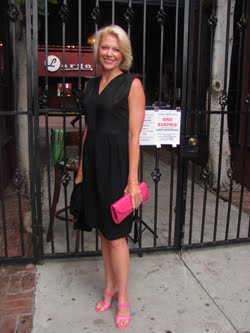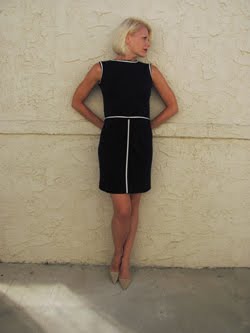- Jean Patou - Artistic Director 1958 to 1962
- Chloe - Creative Director 1963 to 1978 and again 1992 to 1997
- Fendi - Creative Director 1965 to 2019
- Chanel - Creative Director 1982 to 2019
- Karl Lagerfeld (his eponymous line) - Creative Director 1984 to 2019
Wednesday, May 17, 2023
Cinema Connections at the 2023 Met Gala
Saturday, May 13, 2023
Cinema Connections at the 2023 Academy Awards
I could not help but think of the green Adrian gown Loretta Young wore when she won her Best Actress Oscar as soon as I saw the voluminous green wrap around the Tony Ward Couture that Fan Bingbing chose for the "champagne" carpet.
An interesting Oscars flashback. 2023 nominee Kerry Condon in yellow Versace is channeling an iconic red carpet look from 2001 - Renee Zellweger in vintage 1959 Jean Dessès. Condon later confessed that this was indeed her inspiration.
Sunday, January 15, 2023
Cinema Connections at the 2023 Golden Globes
As many of you know, I watch award shows such as the Golden Globes for any cinema connections I might see on the red carpet. I tend to only post them live on social media, but I'm going to try to post them here as well. The Golden Globes were last Tuesday and - surprise! - I saw several connections to classic cinema and share some of those with you below. And, in celebration of the 80th anniversary of the Golden Globes, I also include a couple flashbacks to 2002 and 2011.
Tuesday, March 6, 2018
Cinema Connections - The Influence of Classic Costume Design on Oscars 2018 Fashion
Adriana Lima in Georges Hobeika
and
Gloria Swanson in Ethel Chaffin for 1922's My Husband's Trademark
Saturday, June 3, 2017
Cinema Connection - Celebrating 40th Anniversary of Iconic ANNIE HALL Style
[Morley] said, '"Tell her not to wear that. She can't wear that. It's so crazy."
And I said, "Leave her. She's a genius. Let's just leave her alone, let her wear what she wants.'"When Annie Hall hit movie theaters in 1977, it was a seismic shift in fashion. The revolution was immediate, seen everywhere from the designer runways to the street. Diane's interpretation of menswear in the movie had the biggest impact. She simultaneously drew from the past while also being ahead of the trends. Her reference points were inspired, including menswear of both the 1920s and 1940s. With Annie Hall, Diane Keaton became as important to advancing menswear in the 1970s as Marlene Dietrich did in the 1930s and Katharine Hepburn in the 1940s.
Diane's look also referenced the bohemian feel of the 1960s and early 1970s. With every outfit, she taught us the art of layering. Her passion for accessories like hats and scarves is clear, and she wove them into several outfits in the film. Coco Chanel once commanded women to remove one item of an outfit before heading out the door, but Diane obviously does not subscribe to this. She taught us how to effectively layer a look without feeling overwhelmed, and many of the ones from Annie Hall are right on trend today.
Countless designers (such as Jenna Lyons at J. Crew), stylists (Rachel Zoe), models (Kate Moss), and celebrities (Rachel Bilson) continue to draw inspiration from Annie Hall style. There are even more examples below, including a few from around the world. Diane won the Best Actress Oscar for Annie Hall, but she definitely deserves another award for her iconic style. Well, la di da. La di da.




































































































































